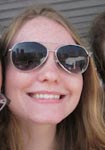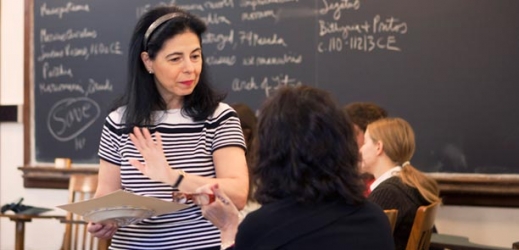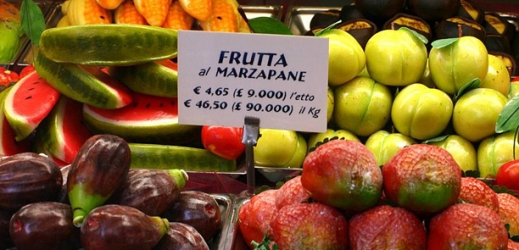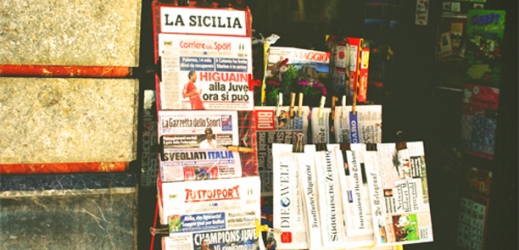In this hyper-active lab, Italian acquires a physical form and becomes a living experience.
ITAS 101 Elementary Italian and ITAS 201 Intermediate Italian
Flavia Laviosa, senior lecturer in the Department of Italian Studies, believes language acquisition takes place when students move outside the walls of the classroom, and learn through motion and emotions. That's why you may see them running around the halls and paths of the College, exploring new physical spaces, and experimenting with the "frontiers of synesthesia."
Laviosa teaches courses in which students explore the intricate web of sounds and structures of Italian, acquire fluency and accuracy, and experience the complexity of a new culture. Learning in her classes comes in many forms and through a wide range of multisensory activities.
Students learn kinesthetically as they experience touch, smells, temperature, taste, lights, colors, fabrics, textures, and shapes. They also write and read phonemes, words, sentences, and punctuation with their own bodies; and narrate stories through art, toys, clothes, accessories, or building blocks. New sounds, parts of speech, grammar structures, verb forms, clusters of tenses are choreographed and staged, turning language skills into a collective dance, a polyphonic choir, and a collaborative drama. These tasks bring lightness and spontaneity to the learning process and let students respond to experiences in a personal way and produce creative language.
Italian holidays, traditions, and issues become familiar as students work critically with newspapers, television programs, songs, feature and documentary films, short stories, and novels, giving weekly individual or group oral presentations on cultural themes. Whenever possible, Laviosa invites the director, author, film critic, or journalist whose works have been studied to join the class for discussion.
As part of their regular routine, students write Il nostro giornale (Our Newspaper) on the board, with news in politics, economics, crime, art, and sports. Students present and discuss the Italian perspective on domestic and international issues, and compare Italian and American journalists' coverage on the same issue.
 We spend most of the class period moving around and interacting with each other, which makes it fun! Our class has bonded over learning Italian the last two semesters; we're like a very tight knit family and we all support each other. Professoressa Laviosa is one of the best professors that I've had at Wellesley.
We spend most of the class period moving around and interacting with each other, which makes it fun! Our class has bonded over learning Italian the last two semesters; we're like a very tight knit family and we all support each other. Professoressa Laviosa is one of the best professors that I've had at Wellesley.
—Cassie Hoef '15



